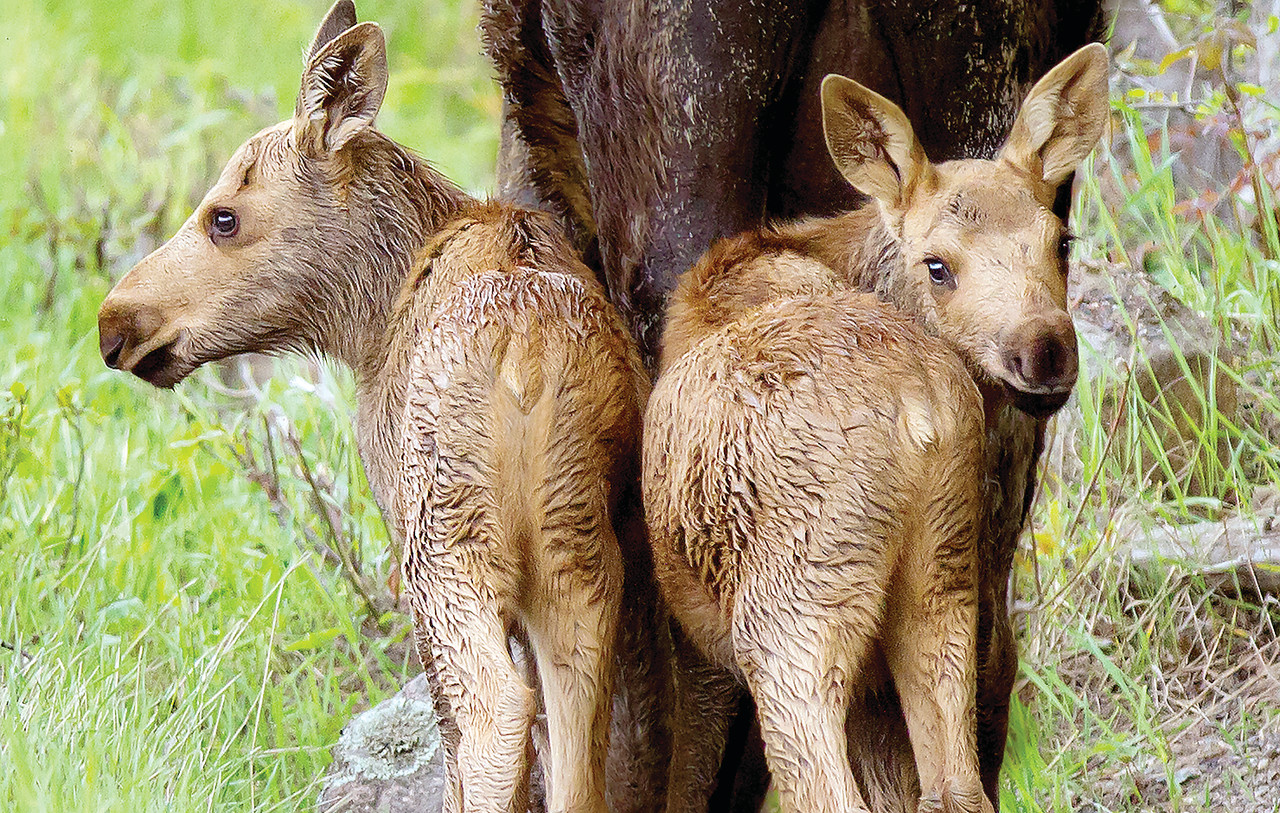Support the Timberjay by making a donation.
Moose calf survival hopeful
REGIONAL— More moose calves appear to be surviving over the past year, according to the latest data from the ongoing study by the Department of Natural Resources.
“Our calf helicopter surveys …
This item is available in full to subscribers.
Attention subscribers
To continue reading, you will need to either log in to your subscriber account, or purchase a new subscription.
If you are a current print subscriber, you can set up a free website account and connect your subscription to it by clicking here.
If you are a digital subscriber with an active, online-only subscription then you already have an account here. Just reset your password if you've not yet logged in to your account on this new site.
Otherwise, click here to view your options for subscribing.
Please log in to continue |
Moose calf survival hopeful
REGIONAL— More moose calves appear to be surviving over the past year, according to the latest data from the ongoing study by the Department of Natural Resources.
“Our calf helicopter surveys during fall 2015 and late March (just prior to the new calving season) documented a 40-percent survival of calves to one year of age,” state Glenn DelGuidice, lead researcher for the project. “That is almost double the near-annual calf survival rate we reported for 2013,” concluded DelGuidice. In 2013, only 26 percent of the calves in the study survived their first year.
Including twins, DelGuidice estimates that the 30 cows that successfully calved in the study cohort had a total of 34 calves. So far, wolves are the primary cause of the eight calf deaths documented to date, with four deaths attributed to wolf kills, two probable wolf kills, and two deaths by unknown causes. Even so, just over three-quarters of the moose calves in the study have survived through June 17, which is slightly over a month since most were born. Based on previous years of the study, about 40 percent of the moose calves die within their first 30 days of life, so this year’s results suggest significantly improved survival, at least among the study population. Most of the calf deaths occurred early on, with the average age of death at just 6.9 days.
The research on moose calves continues despite the decision by Gov. Mark Dayton last year to suspend GPS collaring of the calves after moose cows abandoned a high number of them. But the research team continues to monitor 35 previously collared moose cows and they’ve been able to detect when most cows are ready to give birth because they tend to make what researchers call a “calving movement,” which involves a movement of significant distance, followed by very limited movement right at the time of birth. That has allowed researchers to keep tabs on the cows and their calves, even though the calves are not collared.
The researchers can also consistently recognize when a cow and her calf, or calves, encounter predators, particularly wolves. If the wolves are successful in killing a calf, the mother moose typically rapidly flees a distance ranging from a few hundred feet to more than a mile. But the mother consistently returns to the site, sometimes multiple times, giving researchers a fix on the location of the calf’s remains. That’s when the research team heads to the site in hopes of determining the cause of death.
While the calf survival rate in the current study is improved this year, DelGuidice notes that the moose population drop in recent years has significantly reduced the reproductive potential of the herd. “At the population level, we estimate that annual calf production has decreased from 3,894 in 2006 to 1,739 in 2016, largely due to the loss of adult females,” DelGuidice states in a June 17 report.
While the number of female moose has undoubtedly declined, there are some hopeful signs, notes DelGuidice. That includes the relatively high pregnancy rate, of 88.6 percent, among the moose cows in the study. “Over the four years of the study, the calving rate has remained quite “normal” compared to the North American average for moose, of 83 percent,” noted DelGuidice. “This is interesting and of notable value, considering fertility of females during the “rut” is very sensitive to their nutritional condition at that time.”
Where moose populations have crashed, such as in northwestern Minnesota during the 1990s, fertility rates dropped significantly, contributing to the rapid population loss. “Our 4-year pregnancy rates are a positive indicator in that regard,” stated DelGuidice.






